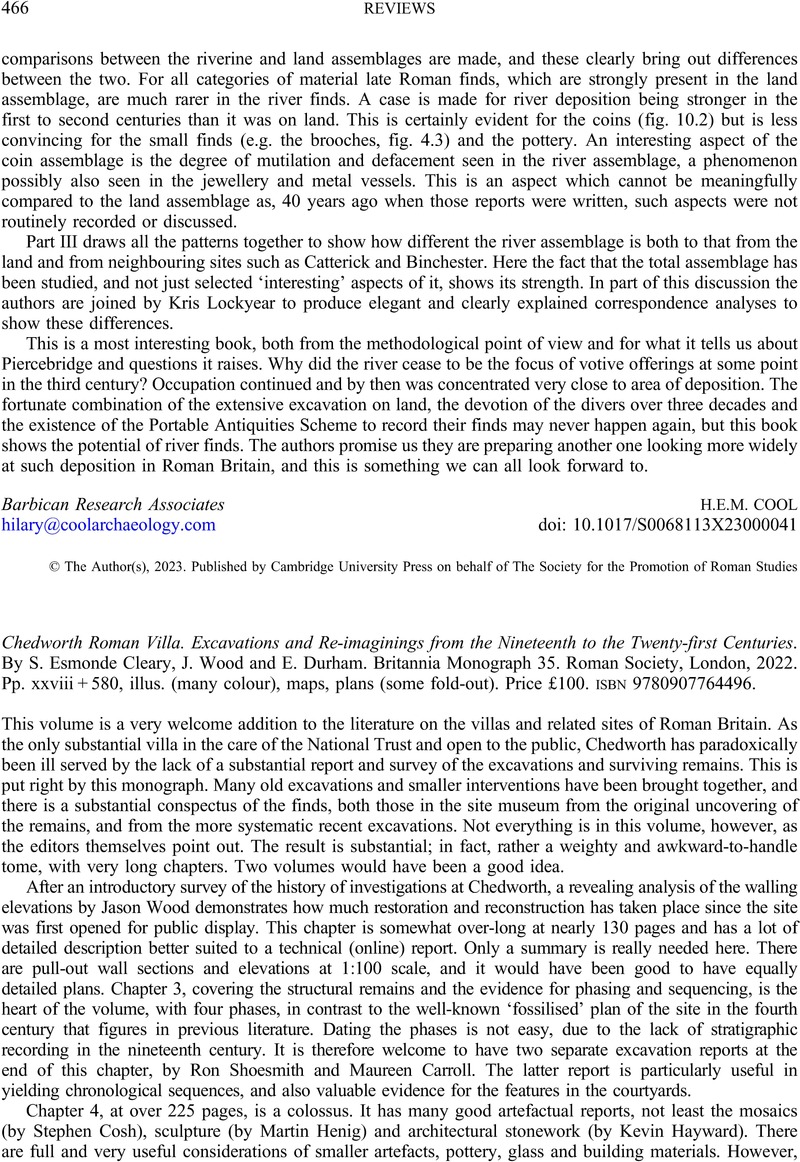No CrossRef data available.
Chedworth Roman Villa. Excavations and Re-imaginings from the Nineteenth to the Twenty-first Centuries. By S. Esmonde Cleary, J. Wood and E. Durham. Britannia Monograph 35. Roman Society, London, 2022. Pp. xxviii + 580, illus. (many colour), maps, plans (some fold-out). Price £100. isbn 9780907764496.
Review products
Chedworth Roman Villa. Excavations and Re-imaginings from the Nineteenth to the Twenty-first Centuries. By S. Esmonde Cleary, J. Wood and E. Durham. Britannia Monograph 35. Roman Society, London, 2022. Pp. xxviii + 580, illus. (many colour), maps, plans (some fold-out). Price £100. isbn 9780907764496.
Published online by Cambridge University Press: 04 April 2023
Abstract
An abstract is not available for this content so a preview has been provided. Please use the Get access link above for information on how to access this content.

- Type
- Reviews
- Information
- Copyright
- Copyright © The Author(s), 2023. Published by Cambridge University Press on behalf of The Society for the Promotion of Roman Studies
A correction has been issued for this article:
Linked content
Please note a has been issued for this article.


